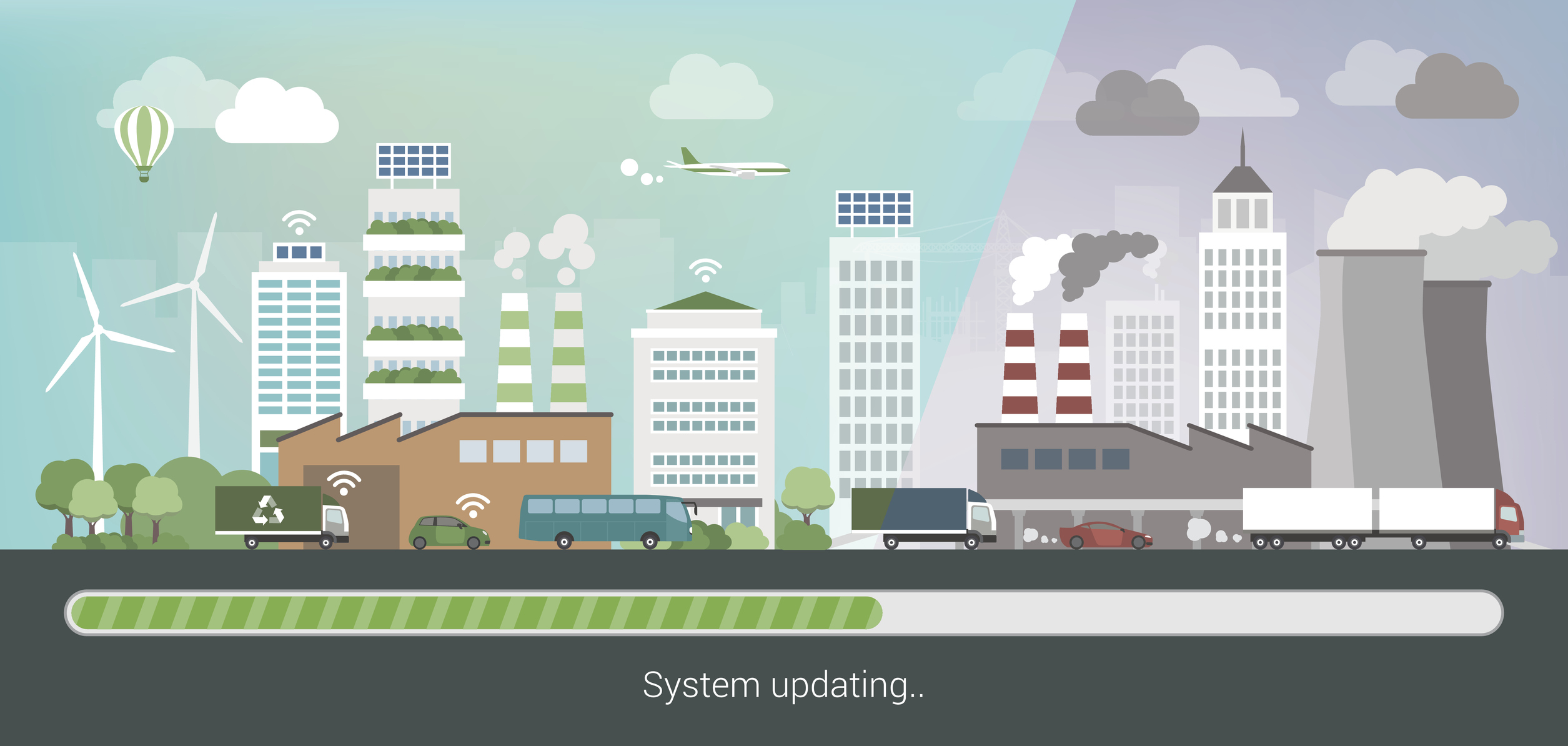
How to Prepare for the Future of Sustainability
Amy Hou | November 8, 2017 | Data & Technology | Energy & Sustainability
This post was contributed by Chris Pieper, Vice President of Marketing at Artis Energy
A great leadership challenge is upon us. Stalwart organizations, upstart innovators, and concerned citizens alike can take the lead in grappling with, advancing and fulfilling the new sustainability orientation now emerging across the globe. Taking short term steps now could advance broad goals for humanity.
Corporate, institutional, and governmental focus on sustainability has grown well beyond practices such as green market positioning and LEED initiatives. Now, the thrust of sustainability has propelled even further ahead to encompass extremely broad goals and systems for the benefit of humanity overall.
The United Nations, for instance, has ratified Sustainable Development Goals (SDGs) such as eradicating all hunger, eliminating all poverty, and advancing industry, and innovation to benefit all – all by 2030!
And private businesses are starting to join in. For example, The Future Fit Foundation, a sustainable business group, has advanced 21 far-reaching goals similar to the UN’s, and industry leaders such as 3M, Pepsi, Avery Dennison, The Body Shop, Ford, Hasbro, SAP, AT&T and other top brands adopted the organization’s mission.
Importantly, Future Fit has mapped their operations to the 17 UN SDGs and advocates that corporations use Future Fit planning to help achieve the UN SDGs.
Why Businesses Get Involved
Sustainability leaders are beginning to digest, internalize and advance these massive ambitions, breaking them down to what is most relevant to their organizations, what is most critical to achieve in the next 3-5 years and what synergies can be exploited in harnessing short-term initiatives to affect the broader, longer term, societal and business goals.
Far from representing charity, approached properly, the broader goals like the SDGs can be a win-win for everyone. The late economist C. K. Prahalad postulated that advancing humanity’s well-being would create a huge new economy for all to benefit from. He even stated this would help reduce threats such as terrorism and avert migration struggles.
As these SDGs of advancing humanity’s wellbeing and ensuring people’s equitable participation in the world economy begin to materialize, it will become even more important to embrace a strong commitment to addressing climate issues.
Using Technology to Advance Sustainability
Importantly, big data, analytics and IT interoperability will play a huge role in achieving all these goals. And we can continue to learn from deployments in one focus area to advance and achieve other goals.
The energy sector, for example, is leading the way in going beyond simply focusing on cleaner renewable sources of power and storage and is now using the Internet of Things and analytics in real-time monitoring and management of energy consumption. Smart building technology is now able to monitor a facility’s energy demand, a community’s coincident demand, and correlating real-time grid supply and emissions data, and this can actually discourage isolated periods of peak usage to avoid significant emissions. Unchecked, the few peak demand days at facilities and ultimately at the electric grid can result in 50% more GHG emissions than during non-peak days, as less sustainable power plants must then be engaged to meet short durations of demand.
Unmonitored energy use can also cause the need for unnecessary, inefficient and costly build outs in substations, transmission lines and power plants to serve just those few hours of peak demand. It can even result in the unnecessary sizing and cost of renewable sources in order to meet just a few hours of demand that could be better managed with monitoring and controls.
Yet with Real Time Energy Management Systems, buildings can better monitor usage and thereby achieve significant emissions reductions.
In addition to Smart Buildings, Smart Agriculture is also beginning to take hold and can help meet broader SDGs. Smart Agriculture is forecasted to represent a $18.5 billion market by 2022, at a compound annual growth rate of 13% between 2016 and 2022.
Advancements such as real-time, remote monitoring can now be used to track soil conditions and weather, which can help farmers more sustainably manage the need to water or treat soil on an automated basis; it also can produce significantly more yields to reduce world hunger.
Bringing It All Together
The strategy of ecosystem engagement is another valuable attribute of the SDGs. Similarly, a key Future Fit goal entails requiring core suppliers to meet the same goals.
Global corporations such as Ford, Pepsi and UTC have begun encouraging and enabling their supply chains to embrace goals for reducing energy, GHGs and costs. Here again, affording core suppliers the real-time monitoring, analytics, visibility, control and reporting can help an entire corporate eco-system understand and better manage contributions toward key goals. And building competencies in harnessing supply chain resources for good can result in multiplying effects across industries and communities.
So, although sustainability may be the greatest leadership challenge of our time, there are so many emerging technologies that can help us meet ambitious goals. And companies that start taking steps to embrace, internalize and advance these broad-reaching goals will put themselves in a position to benefit from the effects of these initiatives.
Urjanet’s Utility Data Platform is one technology powering modern corporate sustainability efforts. If you’re interested in learning more about how Urjanet can help your sustainability program, take a look at our Solutions Sheet: Utility Data for Sustainability or contact us today.
You might also be interested in:
- SPARK 2017 Recap: The Future of Energy & Sustainability
- Top 3 Organizations Driving Corporate Energy Reduction
- Webinar: Sustainability Programs — Surviving or Thriving?
If you like what you’re reading, why not subscribe?
About Amy Hou
Amy Hou is a Marketing Manager at Urjanet, overseeing content and communications. She enjoys writing about the latest industry updates in sustainability, energy efficiency, and data innovation.
You May Also Like
5 Steps to Audit Utility Data Quality
Honor Donnie | June 10, 2022 | Data & Technology
